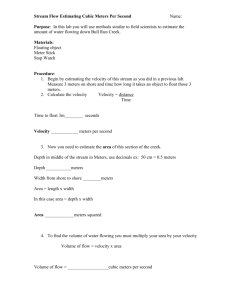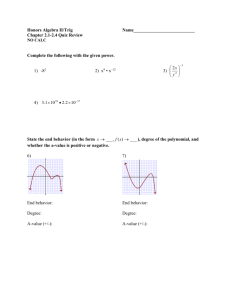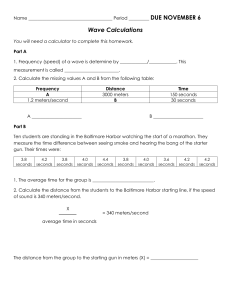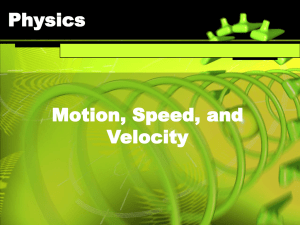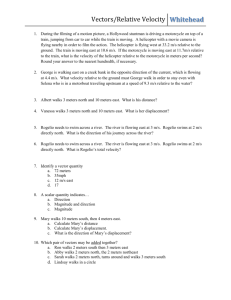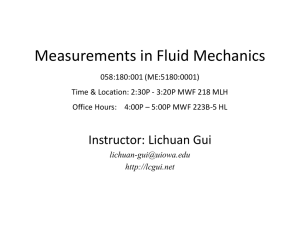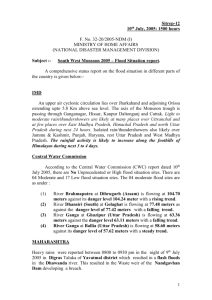lab
advertisement
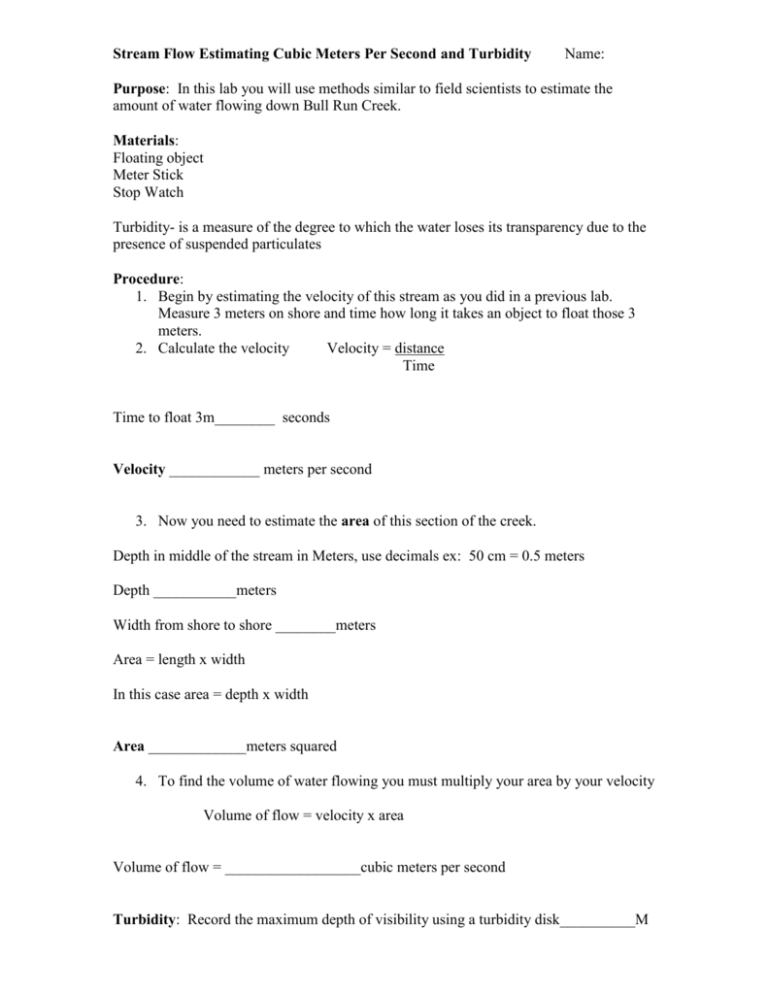
Stream Flow Estimating Cubic Meters Per Second and Turbidity Name: Purpose: In this lab you will use methods similar to field scientists to estimate the amount of water flowing down Bull Run Creek. Materials: Floating object Meter Stick Stop Watch Turbidity- is a measure of the degree to which the water loses its transparency due to the presence of suspended particulates Procedure: 1. Begin by estimating the velocity of this stream as you did in a previous lab. Measure 3 meters on shore and time how long it takes an object to float those 3 meters. 2. Calculate the velocity Velocity = distance Time Time to float 3m________ seconds Velocity ____________ meters per second 3. Now you need to estimate the area of this section of the creek. Depth in middle of the stream in Meters, use decimals ex: 50 cm = 0.5 meters Depth ___________meters Width from shore to shore ________meters Area = length x width In this case area = depth x width Area _____________meters squared 4. To find the volume of water flowing you must multiply your area by your velocity Volume of flow = velocity x area Volume of flow = __________________cubic meters per second Turbidity: Record the maximum depth of visibility using a turbidity disk__________M Analysis: 1. How many cubic meters of water are flowing down Bull Run Creek each second? 2. How many cubic meters of water are flowing down Bull Run Creek each day? 3. What can make the volume of water flowing down Bull Run Creek increase? 4. Would altering the size of the creek with construction equipment change the volume of water flowing downstream per second? For example the stream was made to be more narrow and shallow would that change the volume of flow? Yes or No? Explain. 5. List several factors that can increase or decrease the turbidity of a stream. 6. Please pick up 1 piece of trash from the park and throw it out in a trash can. Thank you!
